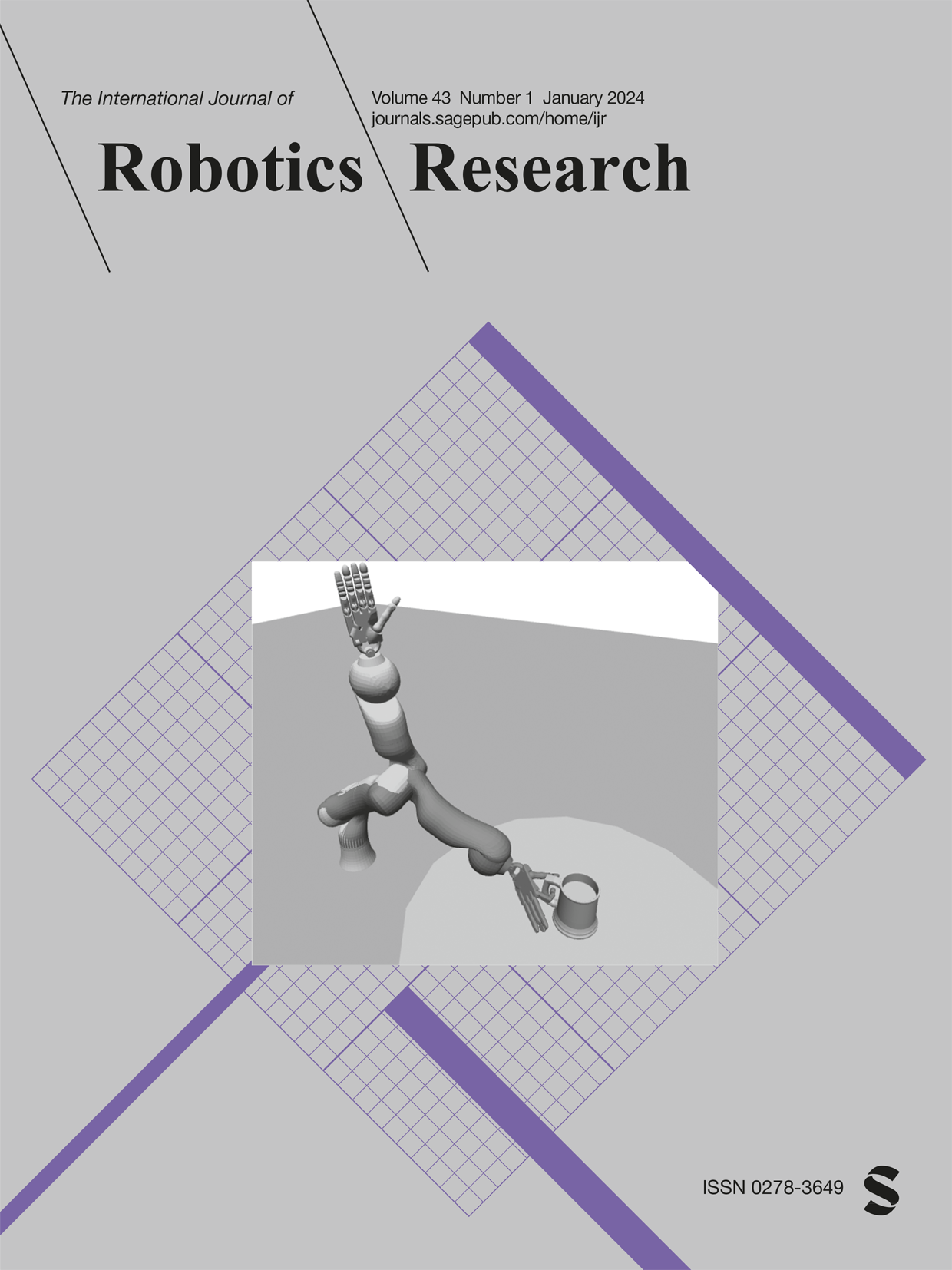最小化桌面对象重排的运行缓冲区:复杂性、快速算法和应用程序
IF 5
1区 计算机科学
Q1 ROBOTICS
引用次数: 4
摘要
对于重新排列桌面上的对象,可能需要将对象临时重新定位到某个缓冲区空间。这自然提出了一个问题,即需要多少同时存储空间或“运行缓冲区”才能使某些类型的桌面重排问题可行。在这项工作中,我们研究了标记和未标记设置的问题。在结构方面,我们观察到可以在从问题实例抽象的依赖图上找到最小运行缓冲区(MRB)的数量,并表明计算MRB是np困难的。然后,我们证明了在标记和未标记设置下,即使对于均匀的圆柱形对象,所需的运行缓冲区的数量也可能随着要重排的对象数量的增加而无界增长。我们进一步证明了未标记情况的界是紧的。在算法方面,我们开发了有效的精确算法,用于寻找标记和未标记桌面重排问题的MRB,在非常高的对象密度下可扩展到100多个对象。更重要的是,我们的算法还计算了一个序列,见证了计算的MRB,可用于解决对象重排任务。使用这些算法,经验评估表明,随机标记和未标记的实例,更接近于模拟现实世界的设置,通常具有相当小的mrb。通过真实的机器人实验,我们证明了运行缓冲区抽象可以为在紧密的有界工作空间中对许多对象进行就地重排提供最先进的解决方案。本文章由计算机程序翻译,如有差异,请以英文原文为准。
Minimizing running buffers for tabletop object rearrangement: Complexity, fast algorithms, and applications
For rearranging objects on tabletops with overhand grasps, temporarily relocating objects to some buffer space may be necessary. This raises the natural question of how many simultaneous storage spaces, or “running buffers,” are required so that certain classes of tabletop rearrangement problems are feasible. In this work, we examine the problem for both labeled and unlabeled settings. On the structural side, we observe that finding the minimum number of running buffers (MRB) can be carried out on a dependency graph abstracted from a problem instance and show that computing MRB is NP-hard. We then prove that under both labeled and unlabeled settings, even for uniform cylindrical objects, the number of required running buffers may grow unbounded as the number of objects to be rearranged increases. We further show that the bound for the unlabeled case is tight. On the algorithmic side, we develop effective exact algorithms for finding MRB for both labeled and unlabeled tabletop rearrangement problems, scalable to over a hundred objects under very high object density. More importantly, our algorithms also compute a sequence witnessing the computed MRB that can be used for solving object rearrangement tasks. Employing these algorithms, empirical evaluations reveal that random labeled and unlabeled instances, which more closely mimic real-world setups generally have fairly small MRBs. Using real robot experiments, we demonstrate that the running buffer abstraction leads to state-of-the-art solutions for the in-place rearrangement of many objects in a tight, bounded workspace.
求助全文
通过发布文献求助,成功后即可免费获取论文全文。
去求助
来源期刊
CiteScore
22.20
自引率
0.00%
发文量
34
审稿时长
6-12 weeks
期刊介绍:
The International Journal of Robotics Research (IJRR) has been a leading peer-reviewed publication in the field for over two decades. It holds the distinction of being the first scholarly journal dedicated to robotics research.
IJRR presents cutting-edge and thought-provoking original research papers, articles, and reviews that delve into groundbreaking trends, technical advancements, and theoretical developments in robotics. Renowned scholars and practitioners contribute to its content, offering their expertise and insights. This journal covers a wide range of topics, going beyond narrow technical advancements to encompass various aspects of robotics.
The primary aim of IJRR is to publish work that has lasting value for the scientific and technological advancement of the field. Only original, robust, and practical research that can serve as a foundation for further progress is considered for publication. The focus is on producing content that will remain valuable and relevant over time.
In summary, IJRR stands as a prestigious publication that drives innovation and knowledge in robotics research.

 求助内容:
求助内容: 应助结果提醒方式:
应助结果提醒方式:


